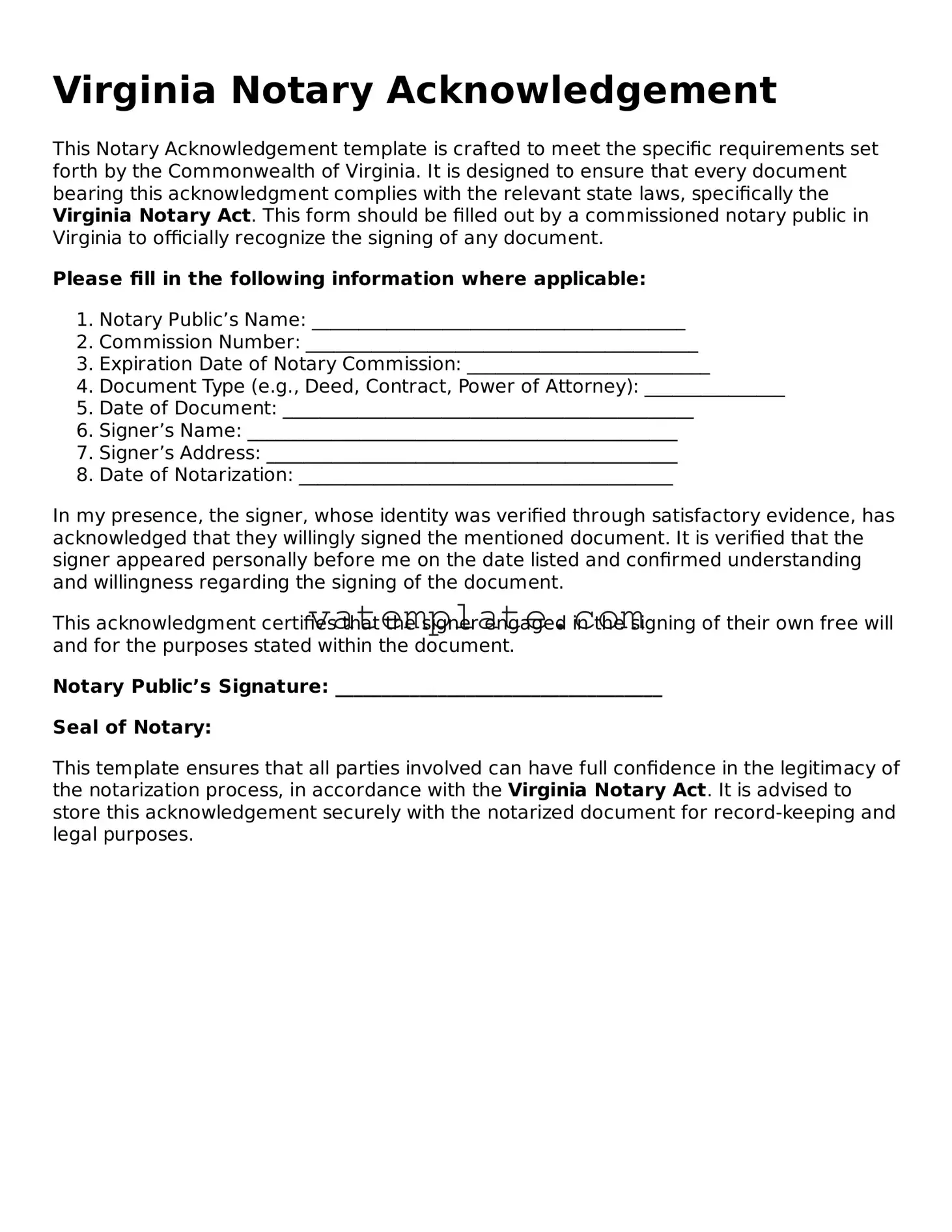Virginia Notary Acknowledgement
This Notary Acknowledgement template is crafted to meet the specific requirements set forth by the Commonwealth of Virginia. It is designed to ensure that every document bearing this acknowledgment complies with the relevant state laws, specifically the Virginia Notary Act. This form should be filled out by a commissioned notary public in Virginia to officially recognize the signing of any document.
Please fill in the following information where applicable:
- Notary Public’s Name: ________________________________________
- Commission Number: __________________________________________
- Expiration Date of Notary Commission: __________________________
- Document Type (e.g., Deed, Contract, Power of Attorney): _______________
- Date of Document: ____________________________________________
- Signer’s Name: ______________________________________________
- Signer’s Address: ____________________________________________
- Date of Notarization: ________________________________________
In my presence, the signer, whose identity was verified through satisfactory evidence, has acknowledged that they willingly signed the mentioned document. It is verified that the signer appeared personally before me on the date listed and confirmed understanding and willingness regarding the signing of the document.
This acknowledgment certifies that the signer engaged in the signing of their own free will and for the purposes stated within the document.
Notary Public’s Signature: ___________________________________
Seal of Notary:
This template ensures that all parties involved can have full confidence in the legitimacy of the notarization process, in accordance with the Virginia Notary Act. It is advised to store this acknowledgement securely with the notarized document for record-keeping and legal purposes.
